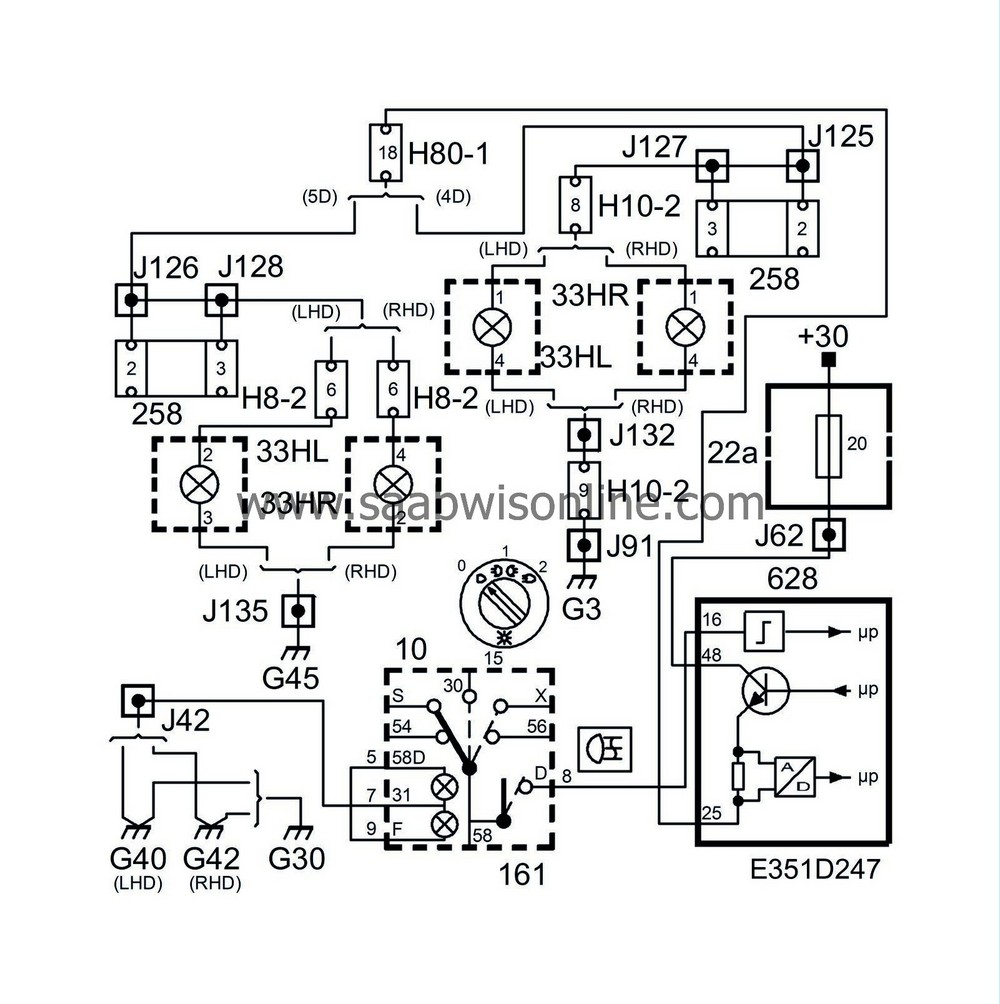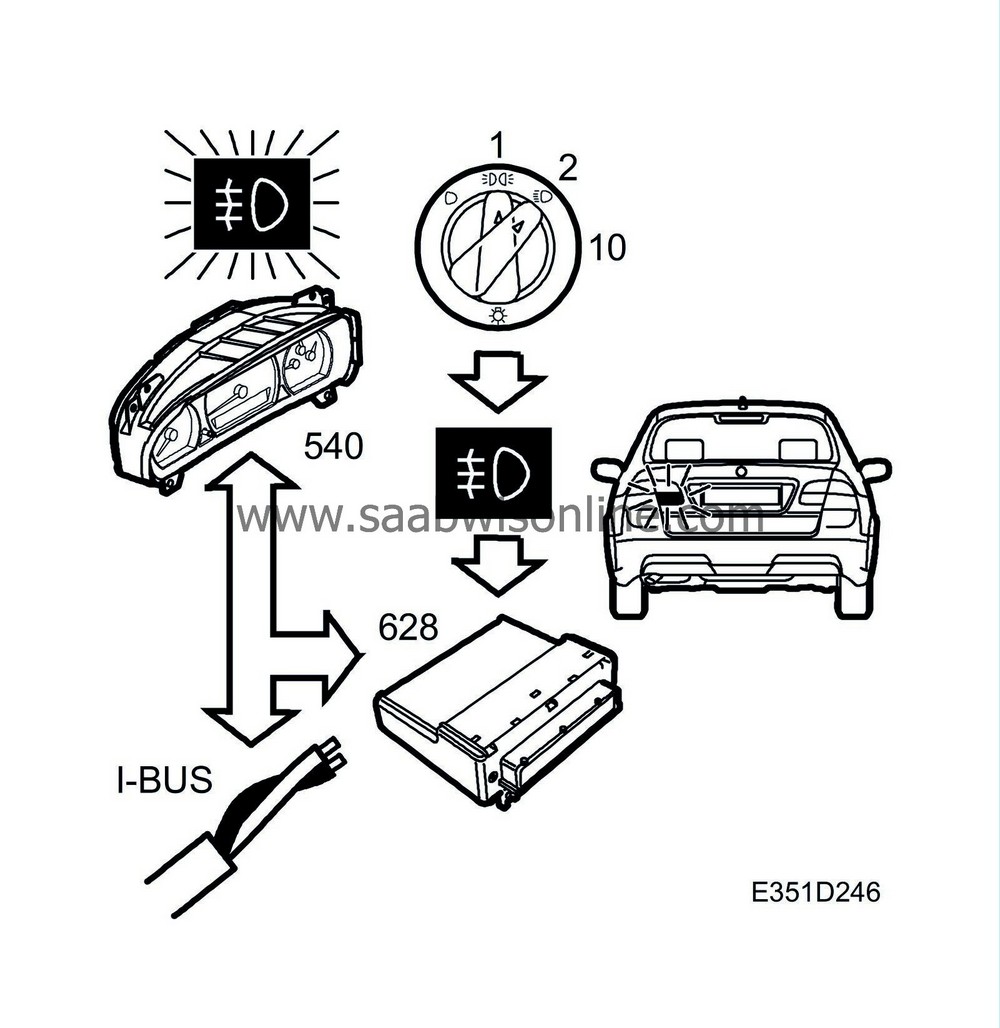PRE-RELEASE
Rear fog light
| Rear fog light |

The rear fog light is turned on by operating the pertinent switch. It must be activated afresh after each time the ignition is switched on. It will light up only if the light switch is in position 1 or position 2 and the ignition switch is in the ON position.
To enable DICE to determine what position (0-1-2) the light switch (10) is set to, the control module uses information from TWICE and its own pin connection.
TWICE, which operates the parking lights, puts information onto the bus (ON/OFF). ON corresponds to switch position 1. OFF corresponds to position 1 or 2.
DICE pin 39 is connected to light switch pin 6, which corresponds to position 0. DICE pin 15 is connected to light switch pin 11, which corresponds to position 2.
The power feed +15 to the rear fog light goes through DICE (628). When the switch (161) is depressed the voltage +15 is supplied via fuse 20 to the control module pin 16. The bulbs (33 HL or alternatively (33HR) are powered from pin 25 on DICE.
DICE outputs information on the status of the rear fog light (ON/OFF). This is used by the MIU (the main instrument unit), which lights and extinguishes the indicator lamp of the rear fog light as appropriate.
Pin 25 on DICE is intended for trailer connection (258).
So as not to burden the battery more than is necessary, DICE switches off the rear fog light off when the starter motor is activated. When the ignition switch reverts from the ST position to ON, DICE switches the rear fog light on again. For safety reasons the shut-off time is maximized to 20 seconds, so that the rear fog light will function even if +54 is lacking in the event of a fault.
| Diagnosis |
DICE detects the imbalance and puts a fault message onto the bus. SID generates an acoustic signal and puts FOG LIGHT FAILURE onto the display.
Diagnostic trouble code B1145 is generated in the event of an open circuit or a short circuit on pin 25 to ground or a short circuit to B+.
DTCs are not generated if the voltage is below 11 V or during diagnostic communication.
| Important | ||
|
When changing a bulb, use a replacement bulb of the correct wattage, since there could otherwise be damage to components. |
||



